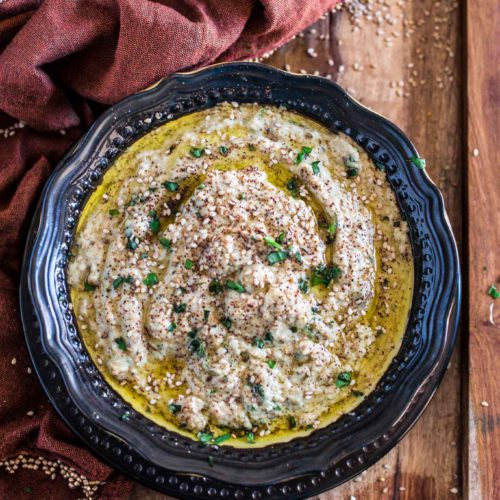Embark on a culinary adventure with our Aubergine Recipe, a celebration of the rich and earthy flavors of this versatile vegetable, also known as eggplant. Whether you’re a devoted fan of aubergines or new to their delightful possibilities, this recipe promises a delicious journey through various culinary traditions and preparations. From silky roasted aubergine drizzled with aromatic olive oil and herbs to mouthwatering eggplant parmesan, our guide unlocks the secrets to making the most of this purple gem. Join us in exploring the myriad ways aubergine can transform into savory stews, creamy dips, or even a hearty meat substitute in plant-based dishes, opening your palate to the delightful world of eggplant cuisine.

Aubergine recipes - Baba Gbanoush
Aubergine, known as "eggplant" in North America, is a glossy-skinned, purple or dark-colored vegetable that belongs to the nightshade family. It is widely used in cuisines around the world and is known for its versatility in various culinary applications. Aubergines have a mild, slightly earthy flavor and a spongy texture. They are commonly used in dishes like ratatouille, moussaka, baba ghanoush, and eggplant parmesan. Aubergines can be roasted, grilled, fried, or baked, making them a versatile ingredient in both vegetarian and meat-based dishes. Additionally, they are a good source of dietary fiber, vitamins, and minerals, making them a healthy addition to many recipes.
Ingredients
- 2 medium-sized aubergines (eggplants)
- 2-3 cloves of garlic, minced
- 3 tablespoons tahini (sesame paste)
- 2 tablespoons freshly squeezed lemon juice
- ¼ teaspoon ground cumin (optional, for added flavor)
- 2 tablespoons extra-virgin olive oil, plus extra for drizzling
- Salt, to taste
- Fresh parsley or mint leaves for garnish (optional)
Instructions
- Preheat your oven to 400°F (200°C).
- Wash the aubergines and pat them dry. Prick the aubergines with a fork in a few places to allow steam to escape during roasting.
- Place the whole aubergines directly on the oven rack or on a baking sheet lined with aluminum foil.
- Roast the aubergines in the preheated oven for about 40-45 minutes, or until the skin is charred and the flesh becomes very soft. You should be able to easily pierce them with a fork.
- Remove the roasted aubergines from the oven and let them cool for a few minutes.
- Once they are cool enough to handle, cut the aubergines in half lengthwise and scoop out the flesh, leaving behind the charred skin.
- Place the aubergine flesh in a colander or sieve to allow any excess liquid to drain.
- Transfer the drained aubergine flesh to a food processor.
- Add minced garlic, tahini, lemon juice, extra-virgin olive oil, salt, and ground cumin (if using) to the food processor.
- Blend all the ingredients until you achieve a smooth and creamy consistency. Taste and adjust the seasoning if needed, adding more salt or lemon juice according to your preference.
- Transfer the baba ghanoush to a serving bowl. Drizzle with a bit of extra-virgin olive oil and garnish with fresh parsley or mint leaves if desired.Serve the baba ghanoush with pita bread, crackers, or fresh vegetables for dipping.Enjoy your homemade baba ghanoush, a flavorful and creamy eggplant dip that's perfect for dipping and spreading!
Video
Notes
One important thing to note when making Baba Ghanoush or any aubergine recipe is the roasting of the aubergines. Ensure that the aubergines are thoroughly roasted until their skin is charred and the flesh becomes extremely soft. This step is essential for achieving the desired smoky flavor and creamy texture of Baba Ghanoush. Undercooked aubergines will result in a grainy or less flavorful dip. Additionally, allowing the roasted aubergine flesh to drain in a colander or sieve helps remove any excess moisture, preventing your dip from becoming too watery. Patience during the roasting process and proper draining are key to a successful Baba Ghanoush.
Nutrition
Serving: 75g
Tried this recipe?Let us know how it was!
